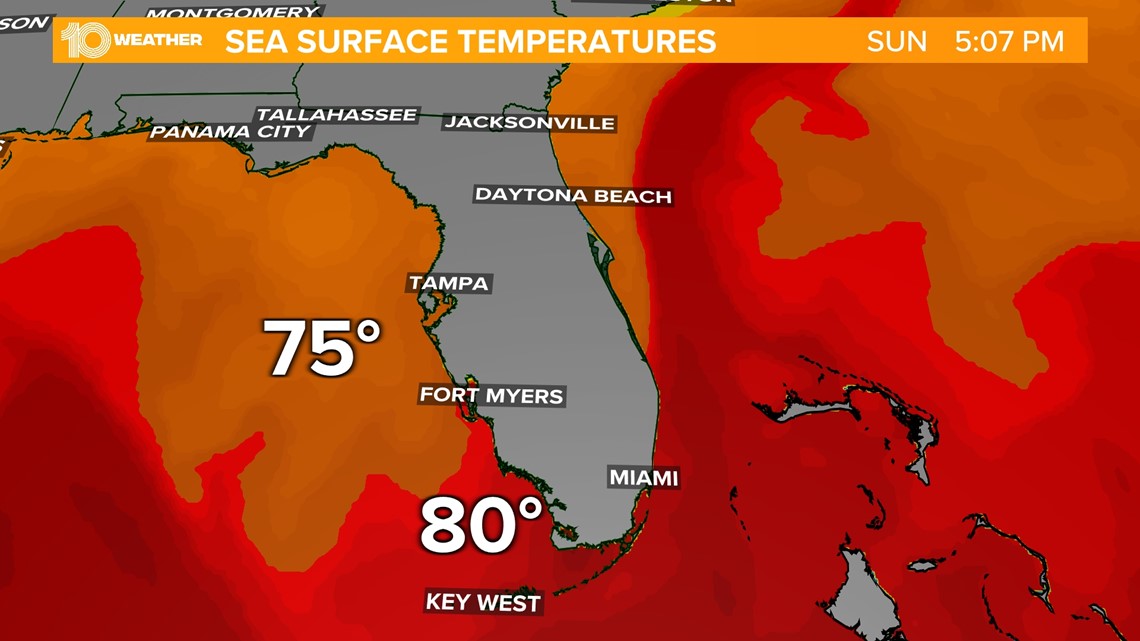ST. PETERSBURG, Fla. — It's springtime in Florida. The sun is in full-force, rain chances are relatively low, and the water is clear and tempting for a dip.
Water temperatures vary greatly by the season. While there is no optimal swimming temperature, we tend to see more people in the water via our 10 Weather Sky Cams when Gulf of Mexico temperatures surpass 70 degrees.
Once that water temperature passes the 80-degree mark, more people will venture out into the sea. But when does that happen?
Here's the general rule of thumb: the further south you go in Florida during the cooler months, the warmer the waters will be. Areas like the Florida Keys and Naples tend to be much warmer than beaches in the Florida Panhandle or St. Augustine in March.
By April, most water temperatures are usually above the 70-degree mark, which tends to be the case several months out of the year for the coasts surrounding the Tampa Bay Area. Lucky us.


Gulf Coast beaches tend to be warmer and calmer than east coast beaches if there are no cold fronts or tropical systems influencing the waters. For instance, this Tuesday, water temperatures at Clearwater Beach were observed at 75 degrees.
Several factors can affect water temperatures, including solar radiation and the temperature difference between water and its surroundings. The ocean has a higher heat compacity than land. There is not a huge swing in temperatures throughout the day, which makes swimming comfortable any hour during the summertime.
In the heat of the summer, those "quick dips" become a lot warmer and a little less refreshing. We venture into bathwater territory in July through September as Gulf temperatures can surpass 90 degrees. On some summer days, temperatures in the Gulf beat out the air temperature.
If you're ever curious about water temperatures before heading out for a beach day, the NOAA has a state-by-state guide with real-time temperatures to help you prepare.



